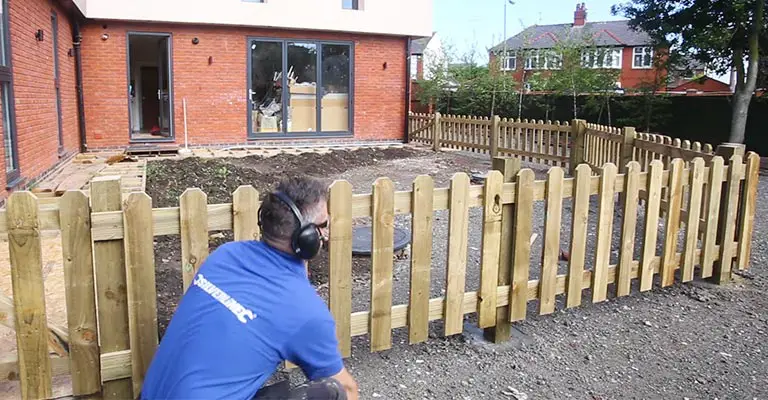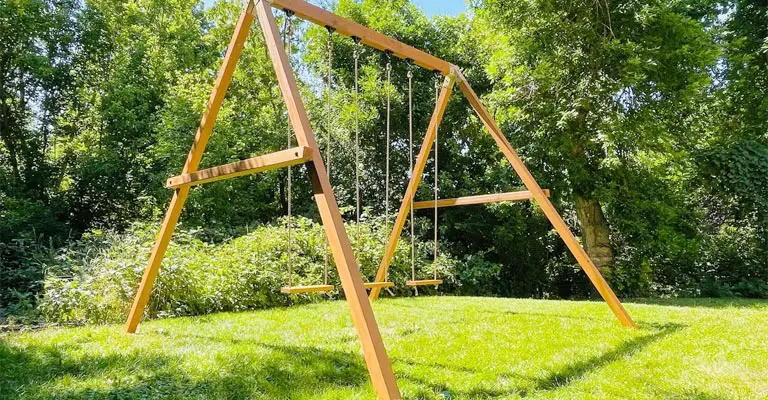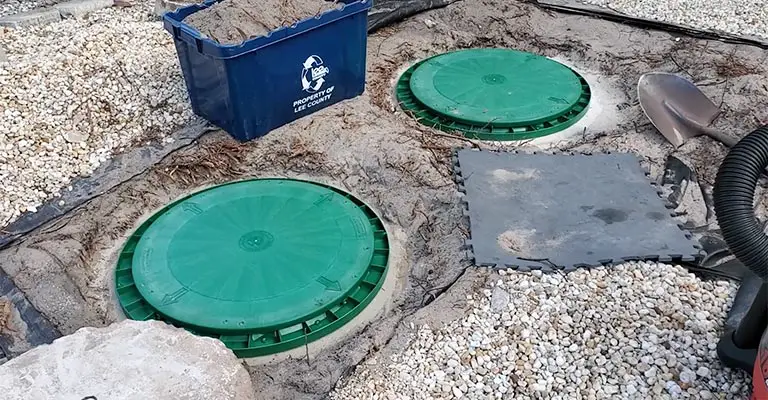A septic field, also known as a leach field or drain field, is a crucial component of a septic system used for the treatment and disposal of wastewater from a home or building.
It consists of a network of perforated pipes buried in gravel-filled trenches, covered by soil. It’s essential to protect and maintain the septic field to ensure the proper functioning of the septic system.
However, what you can put on top of a septic field is a topic of significant importance, as the wrong choices can have detrimental effects on its performance.
A septic field or leach field must be able to breathe. It is therefore not appropriate to grow deep-rooted plants (and vegetables as well). An area with extensive ledges and/or coastal conditions requires a well-functioning system.
In addition to septic system disposal fields, grass is the best plant to grow on top of fill extensions and septic system disposal fields. Flowers may also be grown, but only if the soil is not broken-tiled and little water is applied.
The disposal field and fill extensions should not be planted with plants that have woody roots, since they could clog pipes and other equipment.
Things You Can (and Can’t) Put on Your Septic System’s Leach Field
The purpose of a septic system is to break down organic waste from the home, separating it into liquid and solid waste. Moreover, solid sludge must be pumped out at scheduled intervals from the bottom of the tank.
A septic field is typically built with perforated pipes, set in gravel trenches, and buried about 1 to 2 feet underground. Wastewater can be treated and reused as irrigation for crops or simply dumped into it.
To prevent damage to the septic system, this field is usually left unused, but it can be used for a variety of things. The following tips will help you utilize a septic field without damaging or interfering with it.
Do’s and don’ts of septic landscaping:
Don’t Do:
- On or near the drain field, plant a vegetable garden.
- Overlay the drain field with plastic sheets, bark, gravel, or other fill materials.
- Over the drain field and reserve area, reshape or fill the ground surface. It is generally fine to just add topsoil if it is not more than 2 inches deep.
- Create ponds near the septic system and reserve area.
Do:
- Keep native vegetation or plant grass. You should use these covers for your drain field.
- Make sure all surface drainage is directed away from the septic system.
- Plants with shallow roots should be used. It is possible for tree roots to grow into drain lines and clog or break them.
- Plants and trees that love water should be avoided.
- You should make sure that the tank lid is secure.
Fences Can Be Built

There are a lot of considerations when putting up a fence in your yard when you have a septic system. Due to the fact that it is necessary to avoid damaging the pipes in the septic field when digging the posthole and installing the posts.
It is possible to build a fence around the septic field or to run a line through it if you have a blueprint that indicates where the pipes are installed.
You should just take the time to plan out the exact positions of the fence posts. Digging the holes for these supports should be done with caution.
By placing the posts properly, the fence’s weight will be supported by the posts and won’t put undue pressure on the septic system. Ensure maintenance is still possible when the system needs to be accessed.
Pools And Water Features Cannot Be Added
It is great to have a pool, pond, and stream on your property, but always keep them well away from septic tanks.
Too close to the septic field, ponds and streams can become wastewater runoff points, causing the system to be less effective and allowing hazardous contaminants, including E coli, to accumulate.
There are obvious issues with underground pools, because they must be drilled out and installed in the ground next to the septic system, but even above-ground pools can be problematic.
Swimming pools block oxygen from reaching the pipes that carry waste away from the house, stopping evapotranspiration. Moreover, the weight of the pool, particularly when full, crushes the pipes and clogs the entire system.
You Can Plant Vegetation That Benefits the System

Some plants, contrary to popular belief, are actually useful for enhancing evapotranspiration in septic fields. In addition, erosion can cause severe damage to the field, so reducing its effects is essential.
You can plant holly shrubs, boxwood shrubs, azalea shrubs, hollyhocks, wild violets, and spring bulbs to help improve the aesthetic appeal of the septic field and benefit the septic system.
In fact, it is even possible to plant shallow-root trees, such as dogwood trees and cherry trees, within 10 to 20 feet of a septic field. It is however recommended to install a root barrier between the septic system and trees in order to protect them from each other.
Planting Harmful Vegetation Is Not Allowed
Planting the wrong type of vegetation on the septic field can cause problems, even though there are benefits to growing certain plants there.
Plants that cannot be planted on a septic field include pussy willow shrubs, Japanese willow shrubs, aspen trees, birch trees, blue mist spireas, and edible vegetables.
Despite the fact that a vegetable garden might look amazing, harmful bacteria, such as E. coli, can be absorbed through the roots, making the food unfit for consumption.
Even raised gardens aren’t recommended because the soil and structures of the beds can crush the septic pipes.
There are some plants, such as trees, shrubs, flowers, and shrubs, that have deep or expansive roots that can interfere with the effectiveness of a septic system and even wrap around the pipes in the septic field, causing flooding.
It should not come as a surprise that large tree roots are capable of crushing septic system pipes due to their extensive root systems that can break through rocks, pavement, and even foundations.
A Volleyball Court And A Badminton Court Can Be Set Up

Even though an appropriate court with appropriate flooring isn’t recommended, you can mount a volleyball or badminton net without interfering with the septic system by installing some posts.
In order for the septic field to be effective at evapotranspiration, the grass should remain untouched and uncovered.
In the meantime, a simple court can be built without damaging the septic system simply by adding a chalk border or even using rope to create a temporary border.
You should keep in mind that such a court shouldn’t accommodate more than four people at a time, so a full-size volleyball court that can accommodate 12 players isn’t a good idea because of the weight.
Tennis And Basketball Courts Can’t Be Built
It is important to note that tennis and basketball require a paved surface to be played properly, as opposed to volleyball and badminton.
Septic fields are not for parking, building patios, or installing tennis or basketball courts. Paving over them is a bad idea for any reason.
Adding concrete to a septic field not only damages the pipes, but it also adds considerable weight that could cause them to collapse.
You Can Set Up a Lightweight Swing Set

Despite its wide size, the field is a great place to set up a lightweight swing set for the kids, as it can be used freely by kids and pets.
Because of their small size and lightweight construction, this type of playground equipment is usually reserved for children under 10 years old. A swing set can also be set up for some outdoor fun thanks to these factors.
In order to protect the beneficial vegetation in the area, make sure that the swing set does not have any broad roofs that will block the sun.
You Can’t Install Semipermanent Playground Equipment
The open space provided by the septic field can be a great place for kids to play, so installing a semipermanent or permanent structure may seem like a great idea, but this can be problematic.
There is a danger of large play structures damaging the septic field and bending or breaking underground pipes that are only a foot or two underground because they are too heavy.
In addition, a plastic sheet is typically required to prevent erosion and flooding around this type of playground equipment.
In septic fields, however, this barrier can actually cause erosion and flooding by blocking evapotranspiration.
Even sandboxes can cause damage to the septic field when filled with sand, gravel, and other playground materials.
You Can Install an Open-Air Kennel

The structures most often placed on top of septic fields put too much weight on them to be viable. An open-air kennel can, however, be built on top of a septic field if you have a dog that wants to play without running off.
The kennel should not have a roof or a floor sitting over the grass as these would interfere with the evapotranspiration process.
A dog should be provided with a fenced area where it can freely run when in an open-air kennel. Septic fields may be at risk from additions beyond this straightforward design or maintenance may be impossible.
To prevent accidentally breaking a pipe while digging a fence post hole, ensure the fence posts are installed away from septic field pipes.
You Can’t Install Structures
Structures cannot be installed in septic fields, as noted above. To help block out the sun, many people suggest floating decks, small sheds, and even simple gazebos. The septic system is, however, at risk from each of these additions.
There is no safe way to install a deck over a septic field; a deck also prevents vegetation growth over the system, which has a positive effect on reducing erosion.
Garages, sheds, and workshops have the same problems as decks when it comes to weight and access. Field erosion is caused by structures that block out the sun, including gazebos.
This is why even an open-air kennel cannot have a roof. In order to avoid future problems, it’s best to avoid building structures over septic fields.
Final Words
Septic systems are incomplete without a drain field. Tree and shrubbery roots can grow into drain lines if you don’t maintain your landscaping around your system.
It is also possible for other heavy items, such as cars and livestock, to break drain lines. It is possible for the drain field to fail due to strong roots and heavy items. In the event of a drain field failure, your entire system will fail.







